4.5 Shoulder abductor stretch – passive and post-isometric stretch for the shoulder abductors
![]()
4.5 Shoulder abductor stretch
Starting position
- Stand up straight with your feet slightly apart and your arms at your sides.
- Flex your right elbow and place your right hand behind your back.
- Reach as far as you can across your back and to the left of your spine.
- Flex your left elbow and place your left hand behind your back.
- Reach as far as you can across your back and to the right of your spine, and grasp your forearm as near to your elbow as you can.
- Pull your right arm and forearm further across your back with your left hand until you feel the initial stage of resistance from your shoulders.

Technique
- Take a deep breath in.
- Exhale and pull your right arm and forearm further across your back.
- Feel the stretch across the top of you right shoulder and down the side of your right arm.
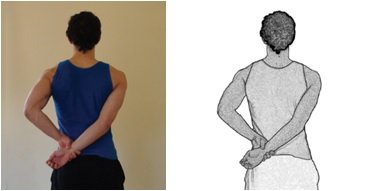
- Take another deep breath and hold it in.
- Attempt to move your right arm and elbow to your right and away from your body for about five seconds but resist the movement with a firm hold on your forearm with your left hand.
- Cease the isometric muscle contraction, completely relax your shoulder muscles, then exhale and pull your right hand and forearm further to the left and across your back with your left hand.
- Repeat the stretch several times with each exhalation.
- Relax your shoulders, stand straight and do not move your spine or pelvis.
- Repeat the stretch for the left shoulder abductors.
Part B. Direction and range of movement
This technique involves full shoulder adduction, full shoulder internal rotation, partial shoulder extension, partial scapular retraction and downwards rotation. Adduction of the arm behind the back is about 10 degrees but varies between individuals; ranging from 5 to 25 degrees.
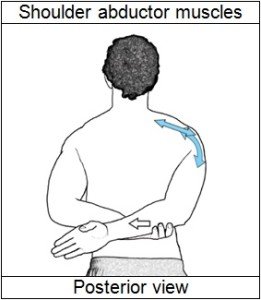
During adduction there is about there is about 4 cm retraction or medial movement of the scapula along the rib cage and towards the spine. Shoulder internal rotation is about 95 degrees, while shoulder extension is about 50 degrees.
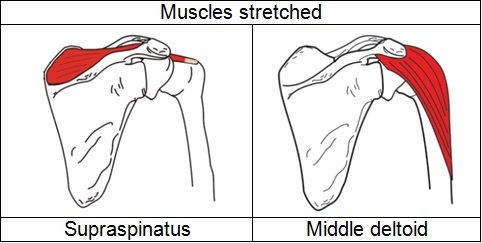
Target tissues
This is primarily a stretch for the shoulder abductors supraspinatus and middle deltoid. Other muscles that may be stretched include serratus anterior, teres minor and the long head of triceps brachii.
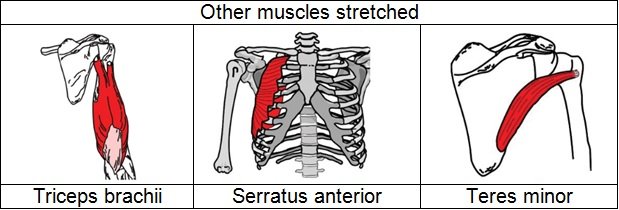
Variations
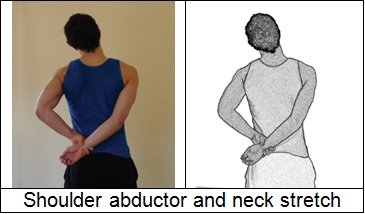
Cervical sidebending can be introduced into the technique to stretch upper trapezius, anterior, middle and posterior scalene, sternocleidomastoid and levator scapulae.
Grasp your wrist with the other hand and pull your arm down and across your back to depress the shoulder, then actively sidebend your head and cervical spine away from the side of the depressed shoulder.
Safety
This is a safe stretch that is unlikely to cause problems. This is an especially good stretch for lengthening supraspinatus, which is the muscle most commonly torn in rotator cuff injuries. By stretching supraspinatus and middle deltoid regularly this will reduce the probability of a rotator cuff strain. This is also a mild stretch for the upper part of the shoulder joint capsule and ligaments, hence may be used when there is a frozen shoulder.
Key





